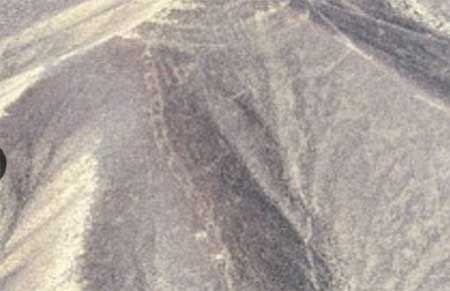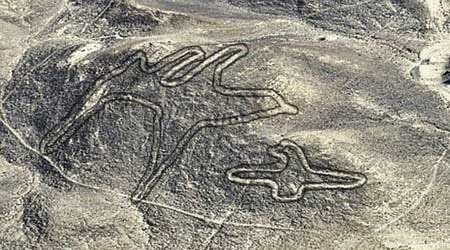New mysterious drawings discovered at ancient wonder in the middle of the desert
The mystery of an ancient wonder called the Nazca Lines in the Peruvian desert has deepened, after hurricanes and sandstorms revealed some never-before-seen drawings.
A pilot named Eduardo Herrán Gómez de la Torre recently discovered drawings of a 60-meter-long snake and a camel on top of an unidentified bird while flying over the El Ingenio valley and the Pampas de Jumana hills in the Peruvian desert, El Comercio newspaper reported.
These new drawings, along with known drawings of a dog, hummingbird, condor and monkey, are believed to have been created by the ancient Nazca people between the 1st and 6th centuries AD. The "Nazca Lines" were first spotted from the air in 1939, when a pilot flew over the Nazca plateau.
 |
| The newly discovered drawing is said to depict a snake about 60 meters long... |
The entire area containing the "Nazca Lines", stretching over 80km between the two towns of Nazca and Palpa, about 400km south of Peru's capital Lima, was recognized by UNESCO as a world heritage site in 1994.
It consists of about 700 drawings carved into the lighter colored rock layer, about 10-15cm deep, contrasting with the darker sand and gravel surrounding it. Combined with the dry, windless and stable temperature climate here, the drawings have been preserved for thousands of years until today without being covered by sand and soil.
 |
| ...and a drawing of a camel near an unidentified bird. |
In general, the drawings are divided into two groups: the first group consists of about 70 identified drawings, which appear to represent creatures such as animals, birds, insects, plants and flowers. The second group consists of drawings of straight lines and basic shapes such as spirals, triangles or rectangles.
The strange thing about the Nazca Lines is that they are so large (the largest figure is 275m long) that they are only visible from above. Furthermore, the reason why these drawings were created has remained a mystery that has been debated for decades.
One theory is that the mysterious drawings are somehow related to water. For example, a triangular drawing at the foot of Cerro Blanco follows the water veins inside the mountain, while the vulture drawing is linked to a local legend that when vultures fly above the mountain, heavy rains will follow.
Similarly, the hummingbird drawing depicts a bird that only appears in the summer, after heavy rains.
According to researchers, all the shapes are created from a single continuous line with no intersection points. They are believed to contain a request to the gods to bring rain.
Experts believe the Nazca Indians danced along the lines as they prayed for rain. Many of the desert drawings have also appeared on pottery dating back to the Nazca civilization, which existed between 100 and 800 AD.
In December 2012, Professor Clive Ruggles of the University of Leicester (UK) announced that one of the drawings with a spiral motif in the Peruvian desert was likely a labyrinth. It could have been created as a "path of the soul".
"The Nazca lines are one of the most difficult archaeological mysteries to understand because of their number, nature, size and continuity. The concentration and juxtaposition of the figures and their cultural continuity indicate that they were the product of a significant and prolonged activity," UNESCO said.
According to Vietnamnet






